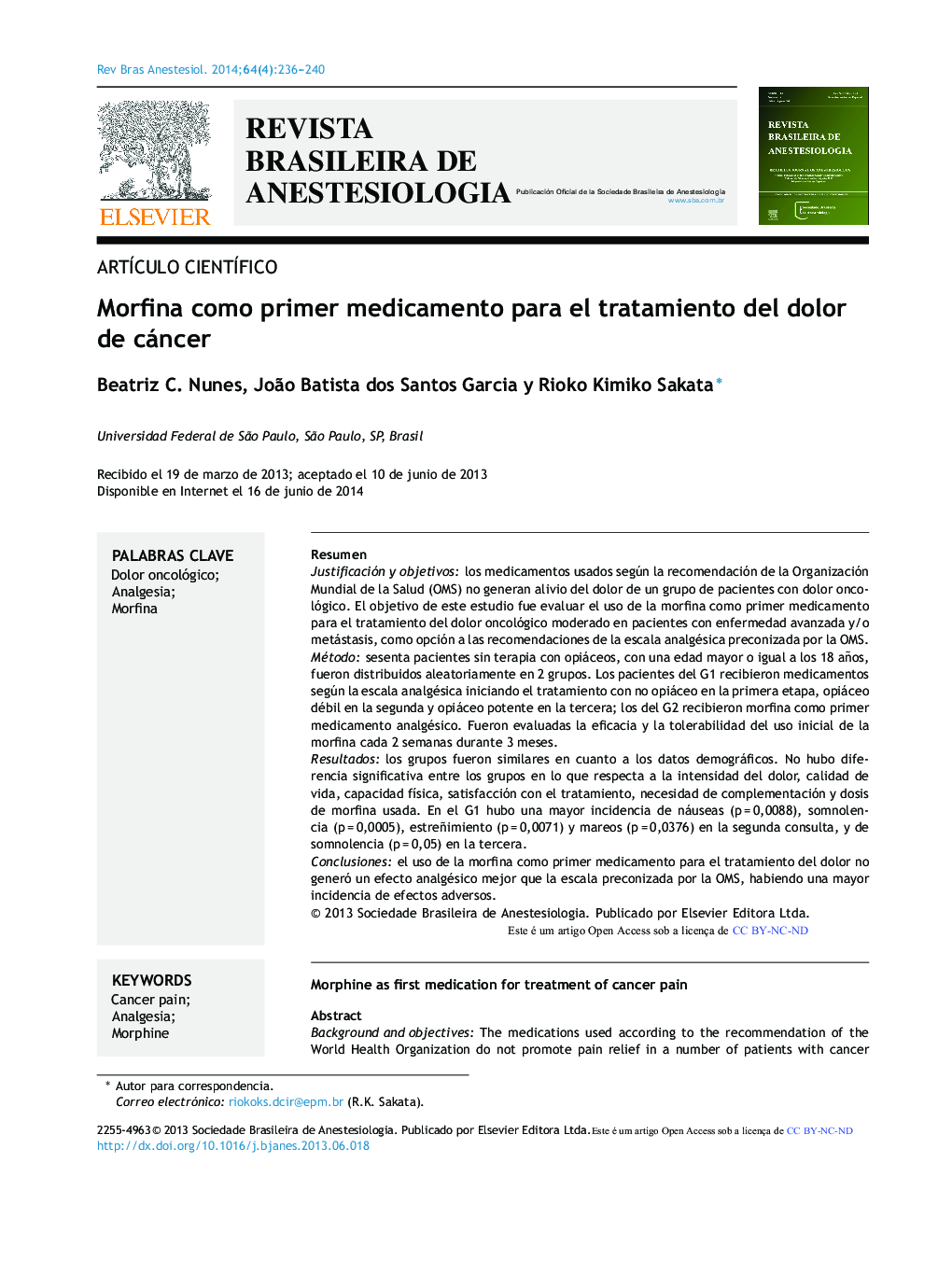| Article ID | Journal | Published Year | Pages | File Type |
|---|---|---|---|---|
| 2749866 | Brazilian Journal of Anesthesiology (Edicion en Espanol) | 2014 | 5 Pages |
ResumenJustificación y objetivoslos medicamentos usados según la recomendación de la Organización Mundial de la Salud (OMS) no generan alivio del dolor de un grupo de pacientes con dolor oncológico. El objetivo de este estudio fue evaluar el uso de la morfina como primer medicamento para el tratamiento del dolor oncológico moderado en pacientes con enfermedad avanzada y/o metástasis, como opción a las recomendaciones de la escala analgésica preconizada por la OMS.Métodosesenta pacientes sin terapia con opiáceos, con una edad mayor o igual a los 18 años, fueron distribuidos aleatoriamente en 2 grupos. Los pacientes del G1 recibieron medicamentos según la escala analgésica iniciando el tratamiento con no opiáceo en la primera etapa, opiáceo débil en la segunda y opiáceo potente en la tercera; los del G2 recibieron morfina como primer medicamento analgésico. Fueron evaluadas la eficacia y la tolerabilidad del uso inicial de la morfina cada 2 semanas durante 3 meses.Resultadoslos grupos fueron similares en cuanto a los datos demográficos. No hubo diferencia significativa entre los grupos en lo que respecta a la intensidad del dolor, calidad de vida, capacidad física, satisfacción con el tratamiento, necesidad de complementación y dosis de morfina usada. En el G1 hubo una mayor incidencia de náuseas (p = 0,0088), somnolencia (p = 0,0005), estreñimiento (p = 0,0071) y mareos (p = 0,0376) en la segunda consulta, y de somnolencia (p = 0,05) en la tercera.Conclusionesel uso de la morfina como primer medicamento para el tratamiento del dolor no generó un efecto analgésico mejor que la escala preconizada por la OMS, habiendo una mayor incidencia de efectos adversos.
Background and objectivesThe medications used according to the recommendation of the World Health Organization do not promote pain relief in a number of patients with cancer pain. The aim of this study was to evaluate the use of morphine as first medication for the treatment of moderate cancer pain in patients with advanced and/or metastatic disease, as an option to the recommendations of the World Health Organization analgesic ladder.MethodSixty patients without opioid therapy, with ≥18 years of age, were randomized into two groups. G1 patients received medication according to the analgesic ladder and started treatment with non-opioids in the first, weak opioids in the second, and strong opioids in the third step; G2 patients received morphine as first analgesic medication. The efficacy and tolerability of initial use of morphine were evaluated every two weeks for three months.ResultsThe groups were similar with respect to demographic data. There was no significant difference between the groups regarding pain intensity, quality of life, physical capacity, satisfaction with treatment, need for complementation and dose of morphine. In G1 there was a higher incidence of nausea (p = 0.0088), drowsiness (p = 0.0005), constipation (p = 0.0071) and dizziness (p = 0.0376) in the second visit and drowsiness (p = 0.05) in the third.ConclusionsThe use of morphine as first medication for pain treatment did not promote better analgesic effect than the ladder recommended by World Health Organization, with higher incidence of adverse effects.
